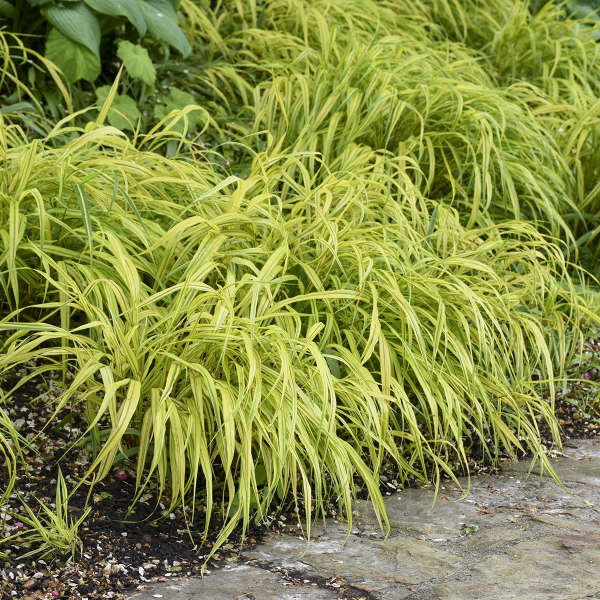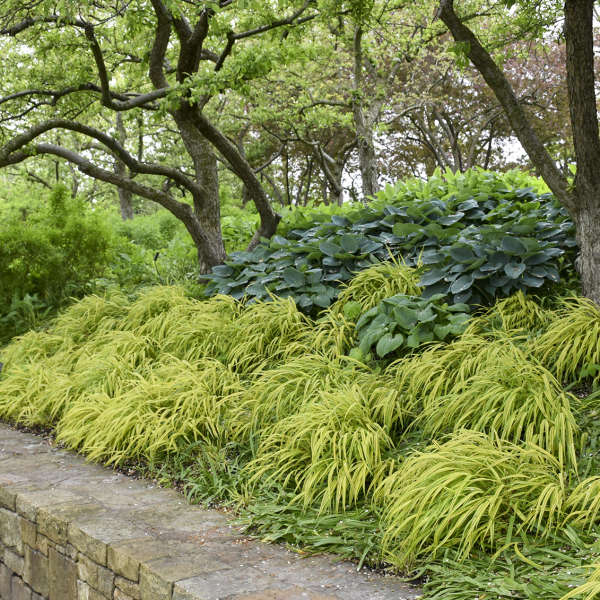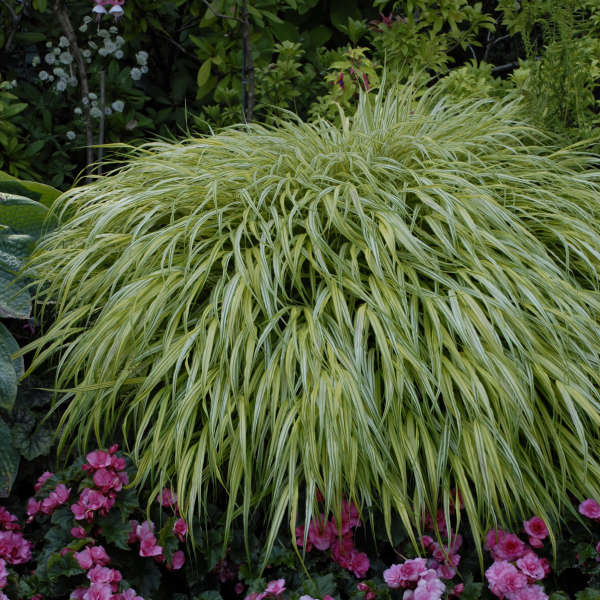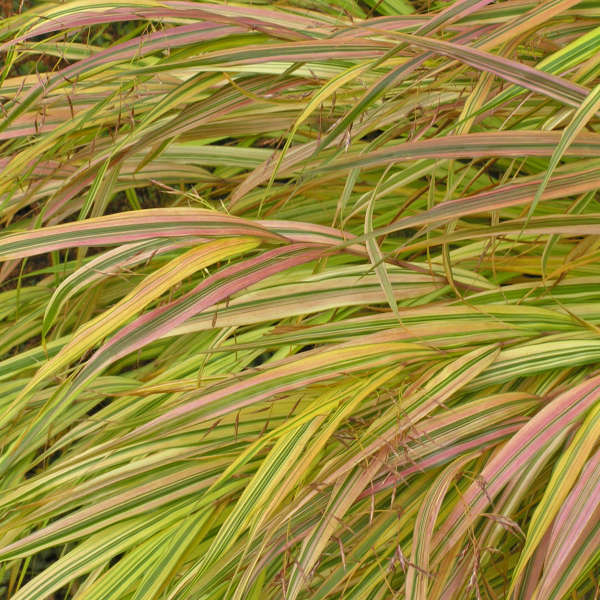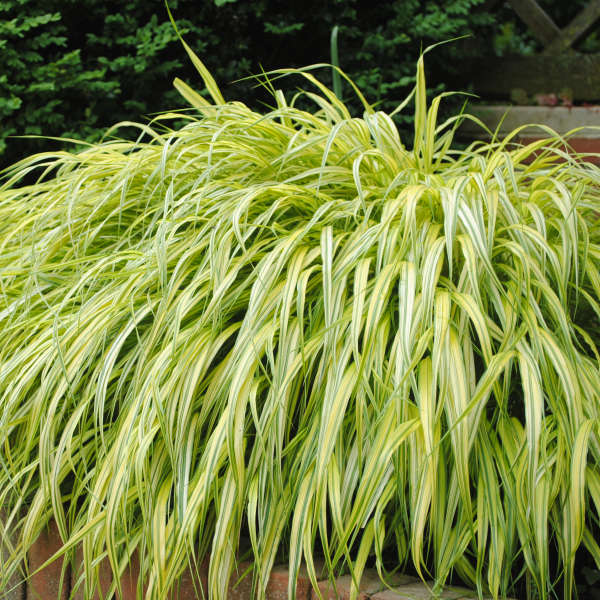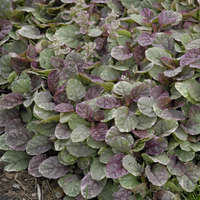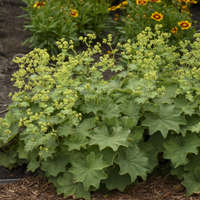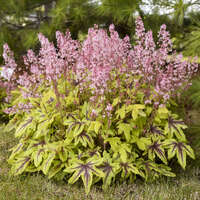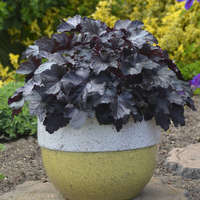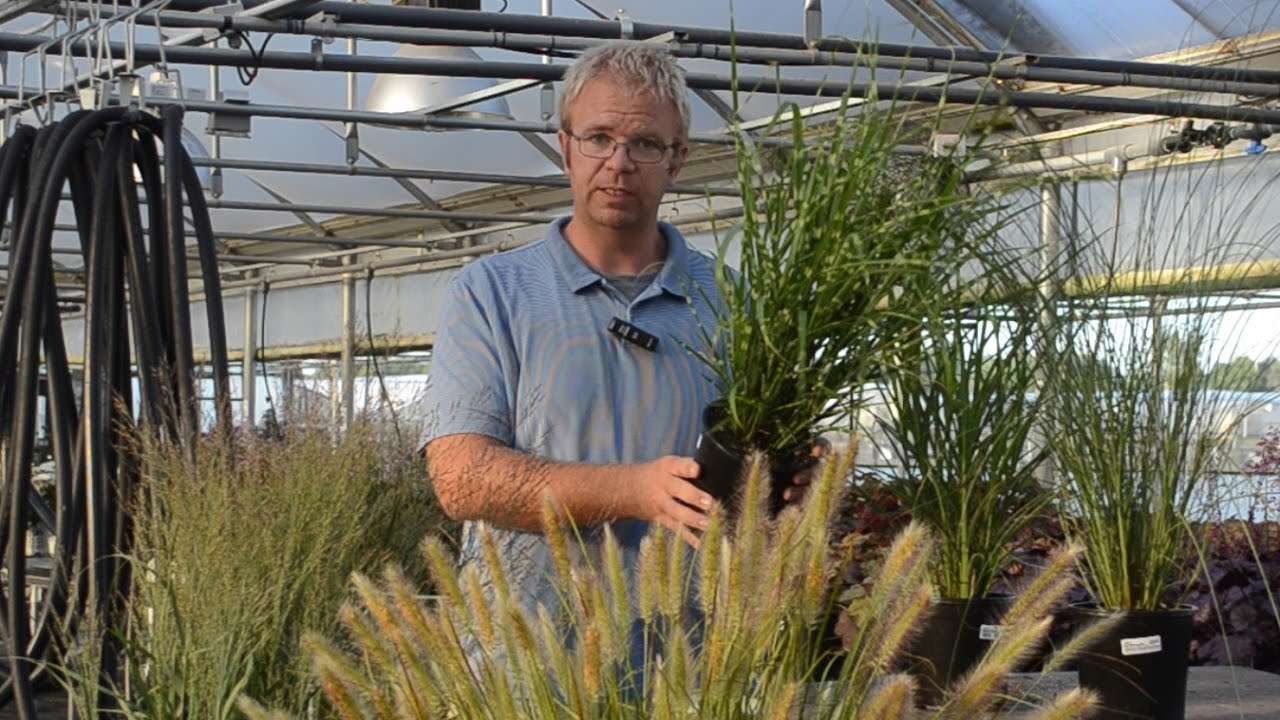Hakonechloa macra 'Aureola'
Common Name: Hakone Grass, Japanese Forest Grass, Ornamental Grass
An intriguing grass for the shade which is perfect for the formal Japanese garden. Variegated but nearly all yellow, the leaf blades have narrow green stripes, mostly near the margins. Perhaps its most fascinating attribute is the cascading habit in which most of the leaves arch in the same direction, appearing much like a golden waterfall. Plant this grass where it will cascade down slopes, drape over rocks, crawl over the edges of walls, at the front of the garden, or even in containers.
Though this grass does spread by rhizomes, it is a slow grower and will not rapidly overtake its neighbors. When grown in part shade, the yellow tones in the leaves will be most pronounced. In deep shade, the variegation will be lime green. In the cooler days of autumn, the golden foliage becomes infused with shades of pink and red. People in milder climates will be able to enjoy the buff color of this grass all winter. In colder climates, it will die all the way back to the ground.
Hakonechloa is grown mainly for its beautiful foliage, though it does produce seed heads. Tiny, inconspicuous flower spiklets appear in airy clusters from late summer thru early fall.
30ct Plug Tray |
72ct Plug Tray |
